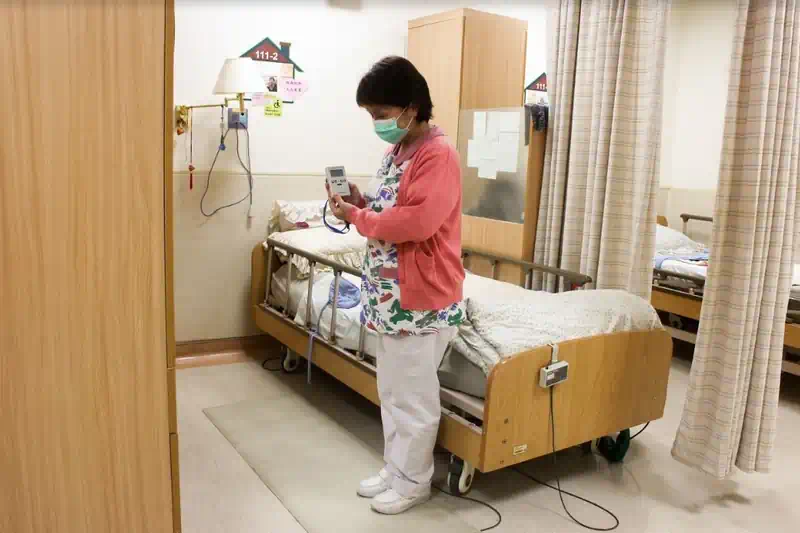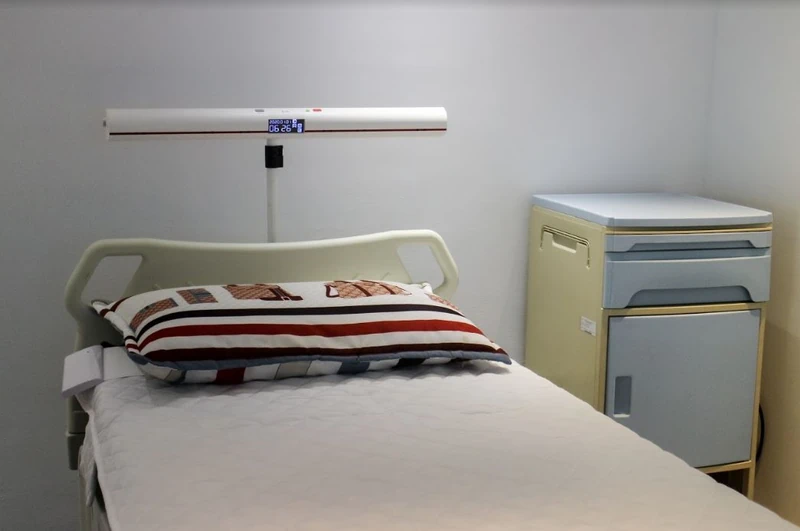Bed exit detection product parade to prevent falls and slips (Part 1)
Source: AnkeCare/Jian Yuxuan 2020/02/20
Original text: https://www.ankecare.com/
"Falls" are an important issue to take care of. Elderly people often suffer from "falls that are not worth the loss". How to prevent them? The introduction of bed exit detection and anti-fall alarm devices is a very good prevention tool.
According to statistics, the number of falls reported by medical institutions in 2018 exceeded 17,000, with an average of 2 people falling every hour. Stroke, diabetes, hypertension, postural hypotension, poor circulation in the lower limbs and sarcopenia, etc., make the elderly a high-risk group for falls.
For long-term care institutions, the incidence of falls among residents is not only an evaluation indicator. If the institution neglects care and causes a resident to fall and injure himself, the person in charge and the caregiver must bear the crime of negligent injury and jointly and severally bear civil liability for compensation. Wei Dasen, director of the Fall Prevention and Treatment Center of Changhua Christian Hospital, said that only by creating an environment to prevent falls and introducing relevant facilities to prevent the elderly from falling can we effectively improve the quality of care and avoid care disputes.
At present, there are a variety of anti-fall and bed exit detection products. After more than 10 years of R&D technology evolution, bed exit detection products can not only notify people of leaving the bed in real time, but can even provide "pre-warning" for leaving the bed. The latest technology is also combined with artificial intelligence calculation modules to add additional functions such as urine wetness sensing, bed sore prevention, sleep quality monitoring, and physiological measurement. Depending on the functionality and technical threshold, product prices range from RMB 2,000 to RMB 10,000.
Wei Dasen said: "There is no absolute quality or badness of anti-fall devices, only whether they are suitable or not. Cost-effectiveness, false alarm rate and compliance with the institution's care procedures are all considerations when purchasing this type of product."
How to choose suitable bed egress and anti-fall devices? "ĀnkěCare Innovative Long-term Care" specifically sorts out the features of five categories of products based on product functions, user experience and caregivers' needs, and provides operators with a basis for purchasing.
1. Bed exit notification mat
The bed exit notification pad is the earliest developed bed exit detection product. It is usually a thin pad within 5 centimeters with a metal conductive film inside. It can be placed under the sheets or on the floor next to the bed, and it can be placed against the detection pressure. The force on the mat determines whether the elder gets up or leaves the bed. If the elder leaves the mattress for more than 2 to 3 seconds, the mat will use radio frequency signals to connect to the host and call the staff to handle it.

Picture reprinted to/Jian Yuxuan AnkeCare Magazine NO.6 2020/03
Xu Jindong, general manager of Jia Shi De Company, which developed the bed-leaving notification mat 10 years ago, said that simple functions and simple operation are the characteristics of this type of product. Basically, there are only two modes of bed-leaving and non-leaving the bed. The price is relatively low and suitable for all-round institutions. Imported, but the sensing sensitivity of the film can only last about one year, and it is a consumable item. The industry can choose equipment that can purchase the sensing pad and the signal transceiver host separately, and the depreciation cost will be relatively low.
Cai Lizhen, director of the Parent Care Center of the Nursing Home attached to Guangtian Hospital, said that the area of the sensing mattress was too small. As long as the mattress moved away from the elder's buttocks, it would make a beeping sound. The high false alarm rate made the staff exhausted. In addition, the sensing floor mat is difficult to clean due to frequent footfalls, and elders may also step over it or get out of bed from the other side, preventing them from being fully effective.
Sang Yuqun, director of the Long-term Care Center for the Elderly, said that this type of product is an after-the-fact notification, and the staff will not be informed until the elder leaves the bed. However, the elder may have fallen by the time they arrive, so choosing this type of product requires evaluating the elder. For those who are at higher risk of falling out of bed, the warning effect is not that good.
2. External bed exit warning device
There are two main types of external bed exit alarms: one is to install an infrared or WiFi signal transmitter beside the bed and continuously send out wireless signals to detect movement on and around the bed; the other is to use a gravity sensor hung at the foot of the bed When a person stands up or turns over, a warning is issued by detecting changes in weight. The advantages of external sensors are that they are easy to clean and have simple functions. The device can be freely disassembled and installed beside the bed. The elderly do not need to change beds for this purpose, and the organization does not need to construct or conduct power lines to install anti-fall equipment.

Picture reprinted to/Jian Yuxuan AnkeCare Magazine NO.6 2020/03
Shi Qihuang, associate professor of the Information Engineering Department of Hongguang University of Science and Technology, reminded that the device with an external bed exit warning device uses indirect sensing. Disturbance by waving hands, lifting the quilt, turning over, or placing objects next to the bed will affect the sensing results and lead to misjudgment. He suggested that when purchasing, consumers should simulate a variety of bedside scenarios and consider product verification records and the use experience of other institutions to avoid introducing products with frequent false alarms.
Shi Jingyu, project manager of Gadgle CreativeTechnology Co., Ltd., said that in addition to issuing reminders when completely leaving the bed, the current bed exit warning system also has a segmented bed exit warning function. For example, when an elder approaches the bed and is about to get out of bed, the work will be notified. Provide personnel assistance to avoid late warning.